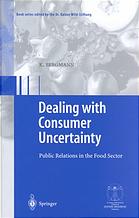

Most ebook files are in PDF format, so you can easily read them using various software such as Foxit Reader or directly on the Google Chrome browser.
Some ebook files are released by publishers in other formats such as .awz, .mobi, .epub, .fb2, etc. You may need to install specific software to read these formats on mobile/PC, such as Calibre.
Please read the tutorial at this link: https://ebookbell.com/faq
We offer FREE conversion to the popular formats you request; however, this may take some time. Therefore, right after payment, please email us, and we will try to provide the service as quickly as possible.
For some exceptional file formats or broken links (if any), please refrain from opening any disputes. Instead, email us first, and we will try to assist within a maximum of 6 hours.
EbookBell Team

4.8
14 reviewsThis volume is the seventh publication within the framework of the scientific series of the Dr. Rainer Wild Foundation. The Foundation was inaugurated in 1991 on the initiative of Prof. Rainer Wild and actively promotes a balanced and healthy nutrition within our industrial society. An important concern of the Foundation is to view the topic "Healthy Nutrition" in terms of a holistic approach. It is not only what we eat that is relevant to our health but also how, where, why, and with whom we eat. The current practice of communication in the nutritional economy often produces significant uncertainty in a large fraction of the population. Efficient and comprehensive publicity by entrepreneurs on the industrial production of foodstuffs needs a new concept for communication between producers, processors, wholesalers, retailers, and end users. Without overgeneralizing, the author explains what makes the consumers uncertain and which consequences this uncertainty has for their nutritional behavior. The main aim of this book is the empirical explanation of the connection between the uncertainty concerning the health value of industrially produced foodstuffs and the behavior of consumers in relation to information. Based on a representative consumer survey, the book shows how consumers currently perceive the publicity activities of the food industry and what their needs are as far as information is concerned. The practical consequences derived from the empirical results are comprehensibly described and the practice-oriented approaches for entrepreneurial publicity activities are discussed.